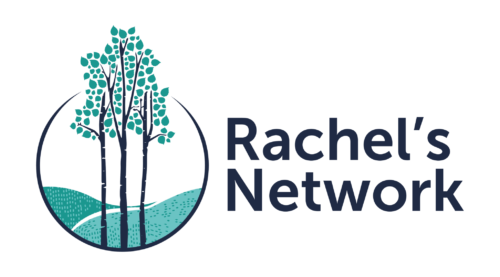Several Rachel’s Network members are passionate about marine conservation and oceans funding. We asked three of them—Martha Davis, Laura Francis, and Lisa Holmes—how they got into this issue and what they’re funding.
How did you get involved in funding oceans?
Laura: When I was 11 years old, I went out on a boat to the Channel Islands and one of the divers with us brought up a tiny shark in a mermaid’s purse egg case. I was hooked, and eventually pursued a career in marine science and education. I have been working for NOAA Channel Islands National Marine Sanctuary for 27 years. Over the past five years I became more involved in philanthropy and investing in ocean health and sustainability.
Martha: I got involved in marine funding after noticing the change in coral condition and fish numbers in the Bahamas, reading Cod: A Biography of the Fish that Changed the World by Mark Kurlansky, and deciding to go back to school in marine conservation. After graduating, I started Community Conch (a Rachel’s Network fiscal sponsee) that has surveyed conch populations in the Bahamas. Perhaps my best investment was in the graduate education of one of the survey volunteers. He now works for the Bahamas Ministry of Tourism and part time for Community Conch and is on his way to a PhD.
Lisa: I began funding ocean work only seven years ago, after I met Bren Smith, the owner of Thimble Island Ocean Farm. Prior to being introduced to the concept of ocean farming, my perception of farming ended at the shoreline. Forming the nonprofit GreenWave was the beginning of my education of all things ocean!
Which issues and organizations are you prioritizing and why?
Martha: I am focused on alternative livelihoods for fishermen (seaweed, sponging, tourism) and developing a model for better management of conch/fish stocks through co-management agreements between fishers and the government. Many artisanal fishermen do not know any other livelihood besides fishing and need other options and skills for diversification when fish stocks have a quota or a closed season. The idea is to bring in other money-making resources to diversify and take pressure off key species and to have local management of a marine protected area because the government will never have enough money to enforce the laws.
Lisa: I not only support GreenWave, but the Native Conservancy (which also promotes kelp farming, but more as a means of environmental remediation and indigenous food sovereignty) and Tompkins Conservation’s Patagonia Azul project. I also support two organizations in Florida where my grandmother’s former foundation was founded; ORCA and the Florida Oceanographic Society.
Laura: I prioritize nature-based ocean and climate solutions that sequester carbon, create food and jobs, and promote sustainability. Projects like regenerative aquaculture, blue carbon restoration, and marine protected areas really get me excited. Education to support women and girls in STEM careers and ocean solutions technology startups are also on this list. Some of the organizations I have supported include MERITO Foundation, Greenwave, National Marine Sanctuary Foundation, Community Environmental Council, Ocean Foundation Sea Grass Grow, Sustainable Ocean Alliance and the UC Santa Barbara Bren School of Environmental Science and Management.
Have you learned anything from fellow Rachel’s Network members that has influenced your funding or thinking?
Lisa: Member Angel Braestrup has been such a mentor to me! She helped organize the gathering of NGOs and funders on hazardous algae blooms in Florida with me two years ago. We continue to meet regularly with other members through an informal oceans group to update each other and explore potential projects such as mangrove restoration.
Martha: Our oceans discussion group has gotten me interested in GreenWave, natural aquaculture as practiced in Spain, and other efforts.
Laura: Our oceans group shares ideas and solutions. A dream of mine is to create a collaborative ocean-focused Donor Advised Fund at Impact Assets where we can collaborate and pool our resources to have a bigger impact on ocean conservation.
What’s your favorite ocean memory?
Martha: It’s hard to choose, so I’ll list a few: playing on Wrightsville Beach, NC as a child in the 1950s, watching tropical birds soar over Conception Island in the Bahamas, seeing dolphins on the bow wave, and seeing the great live coral in Papua New Guinea which has six times the diversity of the Caribbean.
Laura: There are so many! I was involved in the rescue of a juvenile grey whale where we had to take shifts throughout the night keeping it afloat to breathe. When I was in graduate school, I had the opportunity to dive in the Alvin submersible 9,000 feet to the ocean floor to study giant tube worms at the hydrothermal vents on the East Pacific Rise. I was also a safety diver for a video crew that was filming blue whales, the largest mammals on earth. I was lucky enough to be in the water when one of these giants, the size of a school bus, swam beneath me.
Here is a recent article, A Steward for the Planet and the Community Environmental Council, that describes some of my background and interests.
Lisa: My favorite ocean memory is my most recent one in Cordova Alaska, where I was filming for my upcoming documentary, Fork in the Road. We were on Orca Bay going out to see one of the kelp farms and the salmon spawning, and we saw more sea otters than I have ever seen in the wild (including this mama and pup). It was magical!


